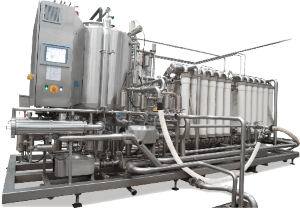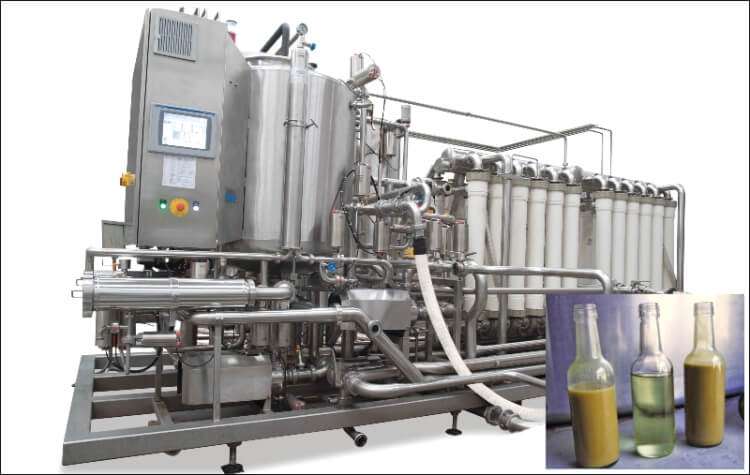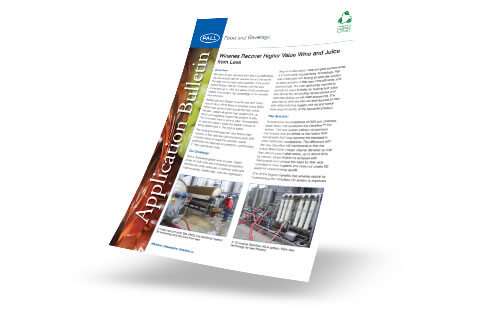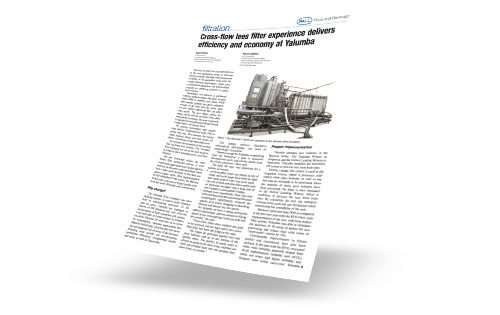Ready to learn more? We can help find the right wine filtration solution for your needs. Contact us.
The Benefits of Removing Lees in Wine and Juice
Better Quality, Higher Yield
While harvest size and wine production can change significantly from one year to the next, overall global wine production has grown only slightly over the last decade. Maximizing yield from juice and wine lees is becoming a significant financial benefit to winery owners around the world. - (OIV Global Economic Viniviticulture Data October 26th 2018).
What are lees in wine and juice?
Lees, the sediment at the bottom of wine and juice tanks, can represent up to 15% of a winery’s total production volume. Types of lees generated during the winemaking process include:
- Juice lees (10 -15% of juice production): pre-fermentation solids generated during harvest
- Fermentation lees (1-2% of wine production): mainly yeast cells and other particles left after fermentation
- Fining lees (2-10% of wine production): solids resulting from wine treatment with additives like bentonite
- Crossflow system concentrates (less than 1% of wine production): the residual solids left over after wine clarification crossflow filtration
With solids concentrations in the range of 20 to 30% there is still a high potential for valuable product recovery.
Recovery of high-quality wine and juice from lees represents one of the most challenging forms of filtration faced by wineries. The high concentration and variability of the suspended solids limits the suitable filtration technologies, while strict environmental regulations and sustainability programs are increasingly adding pressure to reduce waste volumes.
Filtering Lees for Juice & Wine
Crossflow filtration is becoming the preferred choice of winemakers for filtering lees.
Filtering lees allows wineries to recover additional product. Wine and juice can be added back to the process to increase overall production capacity while simultaneously reducing the cost for waste removal.
Diatomaceous Earth (DE) filtration systems such as rotary vacuum drum filters (RVDF) and chamber press filters are the traditional methods used for filtering lees. While these systems can filter high solids effectively, the open design allows for oxygen pick up which can have a negative effect on quality. Recovered wine often needs further processing and is typically downgraded in value and used in blends instead of added back to the original batch.
In many small and mid-size wineries, the lees volume from a single batch is often too small for processing with DE based systems. In such cases, the wineries will delay processing the lees and wait to accumulate an appropriate volume. This delay leads to further reductions in wine quality, hence the potential to recover high value product is lost.
| Chamber Press | Rotatory Vacuum Filter | Crossflow | |
|---|---|---|---|
| CAPEX | 2 | 3 | 4 |
| OPEX | 3 | 3 | 2 |
| Hygiene | 5 | 4 | 1 |
| Footprint | 3 | 4 | 3 |
| Filtrate Clarity | 5 | 5 | 1 |
| Product Losses | 5 | 5 | 2 |
| Changeover/Set-up Time | 5 | 5 | 1 |
| Oxygen Pickup | 4 | 5 | 1 |
DE based technologies require large volumes of Diatomaceous Earth filter aid. This increases the winery waste, disposal, labor, and losses; all factors contributing to high operating costs.
In more recent years, crossflow filtration is becoming the preferred choice of winemakers for filtering lees because it overcomes the obstacles associated with traditional DE based technologies. Filtration is achieved with microporous membranes without the need for filter aids. With no powder handling and an enclosed system, operation is more hygienic and does not create DE waste for environmental landfill.
These systems are usually automated so wineries can use their labor more effectively, which is especially advantageous during the busy harvest period.
Crossflow Lees Filter Experience Delivers Efficiency and Economy at Yalumba
-
The Oenoflow HS Filtration System
Download:








